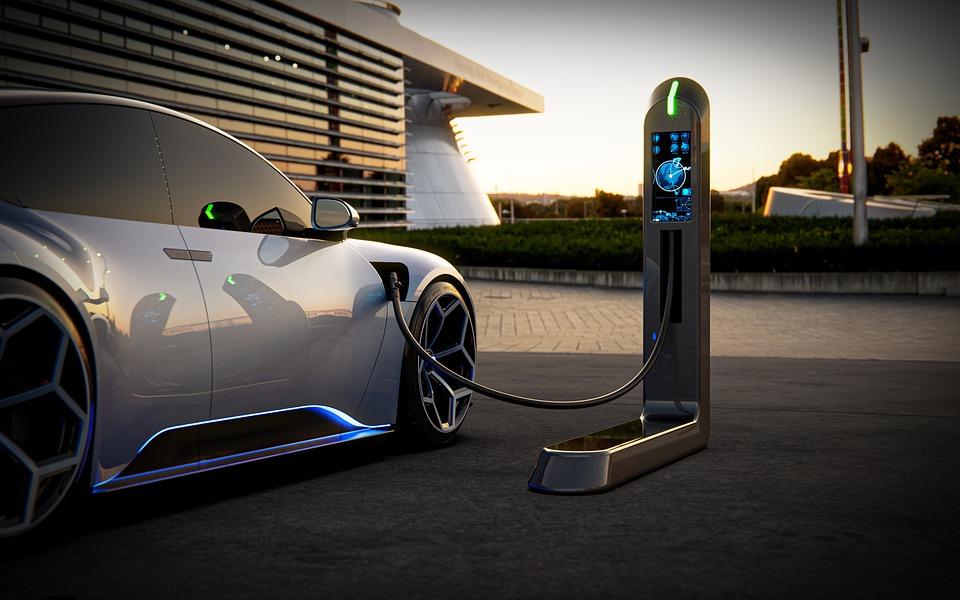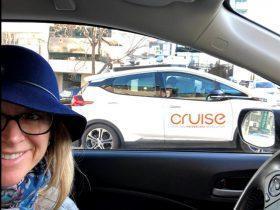In collaboration with GreenBiz
By Michelle Moore
- By 2050, electrification across all sectors of the U.S. economy could increase electricity consumption by as much as 38 percent.
- Electric vehicles give back in other ways as well, including through infrastructure that can increase the efficiency and resiliency of the local grid.
- Investment in factories and manufacturing must also include investment in people and skills so they can take advantage of the employment opportunities.
By 2050, electrification across all sectors of the U.S. economy could increase electricity consumption by as much as 38 percent.
Electric vehicles give back in other ways as well, including through infrastructure that can increase the efficiency and resiliency of the local grid.
Investment in factories and manufacturing must also include investment in people and skills so they can take advantage of the employment opportunities.How big is the opportunity?
Consider the number of passenger cars and trucks on U.S. roads. Today, there are more than 270 million vehicles, of which about 1.6 million are electric. By RMI’s analysis, if we use our shared carbon-reduction goals as a benchmark for determining the pace at which we must electrify the American fleet, we will need 70 million electric vehicles (EVs) on the road by 2030, with 100 percent of all new vehicles being EVs by 2035. In addition, we’ll need about 300,000 fast chargers and 200,000 Level 2 chargers installed by 2030 to make sure everyone driving an EV has easy access to charging stations.
America will need an industrial policy that makes U.S. electric vehicle manufacturing a priority.
America will need an industrial policy that makes U.S. electric vehicle manufacturing a priority. Image: Green Biz.
That may sound like an extraordinarily big change in an extraordinarily short time, but remember how rapidly renewable energy is growing and keep in mind that the same large corporate buyers driving the renewables market are also committing to convert 100 percent of their fleets to EVs. Amazon.com, FedEx, UPS, and Walmart are among the biggest fleet operators in the United States with logistics operations that span the globe, and they have all adopted fleet electrification goals that include zero carbon emissions. Their leadership will not only move the EV market; it will also help commercialize new technologies, build scale and bring prices down for the rest of us.
Policy at the federal, state and local levels is enabling this transformation. From states such as Massachusetts and California, which have set a goal of 100 percent EV sales by 2035, to federal investments in infrastructure, manufacturing and R&D, governments are increasingly working in concert with local communities and leaders in the transportation sector to support electrification. It’s not just about big policy; small changes matter, too, including changing arcane rules that preserve the status quo at the expense of the innovation. For example, the U.S. Department of Transportation issued clarifying guidance in April 2021 about how funding from the agency can be spent that could increase available federal support for EV charging infrastructure by more than $40 billion. Without this kind of helpful guidance, it wouldn’t be clear if or how existing programs could support new technologies.
By 2050, electrification across all sectors of the U.S. economy could increase electricity consumption by as much as 38 percent, with the largest increase driven by transportation. Electricity is purchased and distributed by utilities at the state level, and some states will experience more growth than others. For many, the growth in electricity sales will be welcomed. For small town and rural cooperative utilities in particular, increased sales due to growing electricity demand from the transportation sector will be an opportunity to increase revenues available to reinvest in the local community. Electric vehicles give back in other ways as well, including through infrastructure that can increase the efficiency and resiliency of the local grid.
Make it in America
The opportunity, however, is not limited to vehicle conversions and the energy and infrastructure it will take to power hundreds of millions of EVs. It also includes the potential to make those vehicles in America by modernizing and expanding our manufacturing capabilities. This expansion of U.S. auto manufacturing would include batteries, battery cells, drive trains and assemblies, and it would extend to the transportation research and development enterprise and include the development of new maintenance and repair capabilities. To connect these global opportunities to local economies, America will need an industrial policy that makes U.S. EV manufacturing a priority, rivaling the national government investments global competitors make in their own auto industries.
The U.S. will have some catching up to do. In 2019, 325,000 EVs were made in America while 1.2 million were made in China and to date only seven of the 44 automotive manufacturing plants in the United States have committed to full EV conversion by 2025.
It’s not just about the vehicles; it’s also about the batteries. A massive EV battery plant built by South Korean SK Innovations is under construction in Jackson County, a primarily rural area in Northeast Georgia about an hour from Atlanta, on I-85. The first of two manufacturing facilities is expected to employ 1,000 people and produce enough batteries to equip 200,000 EVs per year. The project will cost more than $2.6 billion to complete, but that’s only part of the investment these facilities are bringing to Jackson County. Lanier Technical College is also investing in job skills training so that local members of the community are ready to go to work in this important emerging industry.
Investing in people is essential, as my hometown learned when Kia built a large automotive manufacturing facility in neighboring West Point in 2009. As former mayor Jeff Lukken explained to me, the community anticipated local unemployment would go down, but it initially went up as jobseekers from other regions moved to town and local members of the community struggled to meet Kia’s hiring requirements for job skills. Once local communities, the state and Kia came together to offer people the training they needed, more local people got jobs and the investment began to realize its potential for the community. You can’t invest in technology and get good results without investing in people.
Link: https://www.weforum.org/agenda/2022/09/electric-vehicle-opportunity-automotive-sustainability-united-states?utm_source=pocket_saves
Source: https://www.weforum.org
















Leave a Reply